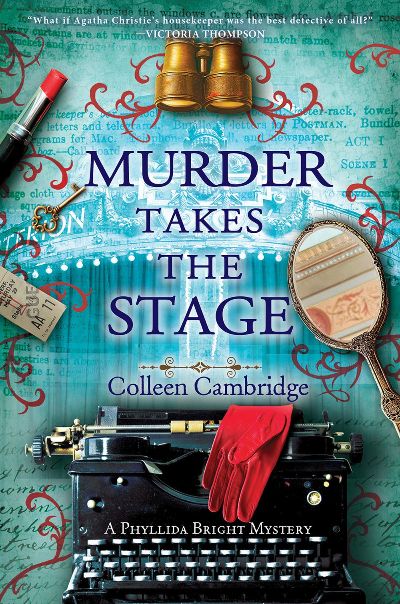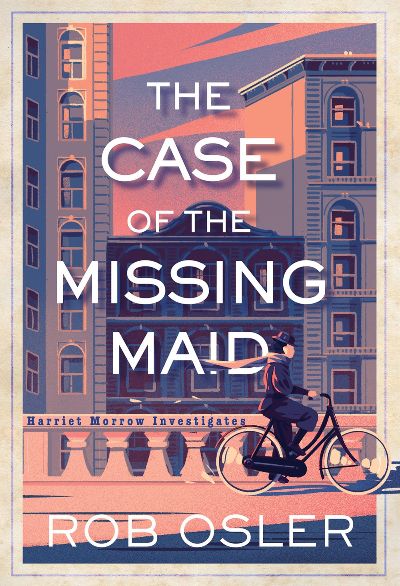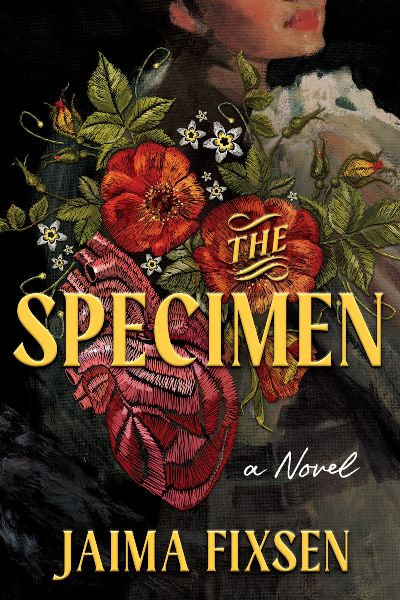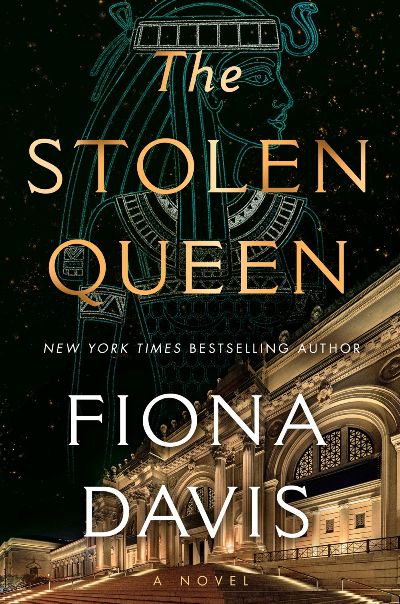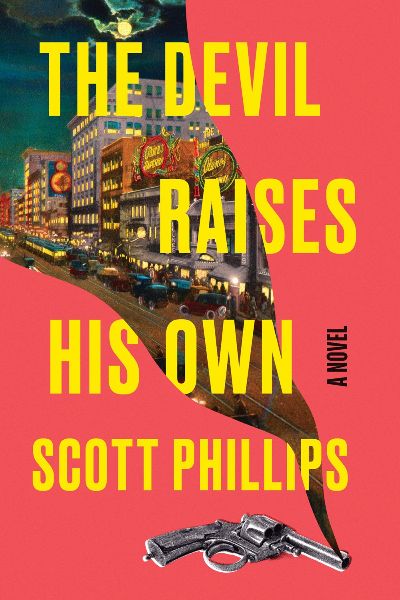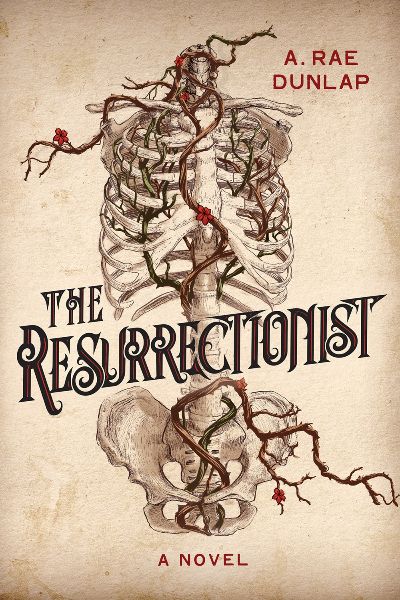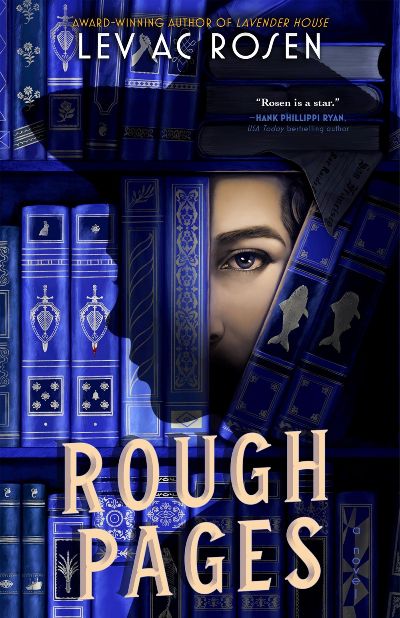It’s November 1940, and Evelyne Redfurn has returned to her London boarding house after six secretive, grueling weeks of training to be a Special Investigations Unit (SIU) agent for the British government’s Special Operations Executive (SOE). But before she can relax with her roommate and best friend, Moira, she’s called up for her first assignment. Hoping to be parachuted into occupied France (her mother was French), Evelyne is disappointed when she is sent instead to investigate the possibility of theft at a weapons research and development facility in rural Sussex. Worse, her handler is her old sparring partner, David Poole. On Evelyne’s first night, however, a routine probe becomes a murder case after she stumbles upon the body of Sir Nigel Balram, the leader of the engineering team at Blackthorn Park. His death appears to be an act of suicide, but drawing on the sleuthing skills she honed in A Traitor in Whitehall, Evelyne and David race to identify a killer before Prime Minister Winston Churchill’s impending visit. The clever and resourceful Evelyne is an appealing protagonist, who struggles to maintain her close friendships without revealing her double life as a spy. Her budding chemistry with David is obvious but doesn’t distract from the main plotline. Fans of Susan Elia MacNeal’s Maggie Hope series will delight in following the adventures of a promising new World War II spymaster.
Historical
Mysteries and the theater make for wonderful marriages—there are scores of examples—and this recent contribution from Colleen Cambridge is completely on point. Agatha Christie and household have temporarily moved from her country estate, Mallowan Hall, to London. The exiles include Phyllida Bright, Christie’s housekeeper (and so much more, including amateur sleuth). But Phyllida is a bit stressed out. She has a love/hate relationship with London—something is making her nervous—plus there is the staff to manage, including the temporary faux-French chef. But enough with the escargot, there’s a murder (Archibald Allston in the Adelphi Theater) followed by another (Benvolio at the Belmont Theater). See where this is headed? Death by alliteration, unless Phyllida gets there in time. This delightful mystery provides a fun look at London’s historic theaters, a glimpse at London’s LGBTQ nightlife, a splendid dénouement right out of a Christie novel, and most remarkably of all: a love interest for Phyllida. Lots of fun to be had here.
It’s hard to imagine, but one of the very best series has gotten even better. While the first three books were set around 2016, and featured Rozie Oshodi, Assistant Private Secretary (APS) to the Queen, here we jump back to 1957. The Queen is a young woman, still new to her role as monarch; the U.K. continues to recover from the Second World War; and a new APS emerges out of the typing pool: Joan McGraw, whose wartime work included decoding. This case is centered around a notorious murder: a young woman, a high-class escort, is found dead in a house in Chelsea that belongs to an elite men’s club. She is wearing only silk underwear and a diamond tiara. Nearby lies the body of an older man, garrotted. The double-murder grips Londoners, including the Queen, who has her own reasons for fearing that someone close to her could be implicated. Elizabeth doesn’t trust the old courtiers who surround her and turns to Joan for help in solving the case of the “tart in the tiara.” Besides a bang-up plot, this novel reaches brilliantly into Elizabeth’s life, from real-life state visits to Paris and North America, trying to bolster the U.K.’s relationships, to her tumultuous relationship with Philip, to her fear of a scandal that could take down the monarchy. This is deep, rich writing that should attract the millions who enjoyed The Crown, and want yet more.
A wonderful foray into turn-of-the-19th-century Chicago, with women entering the workforce, immigrants transforming the city, and the LGBTQ community tucked away in hidden nightclubs. Harriet Morrow, all of 21 years old, is the first woman hired as a detective by the prestigious Prescott Agency—a decision that pleases almost no one, neither the male detectives nor the female typing pool. But working as a detective has always been a dream of Harriet’s, and now, with her parents dead and her younger brother to support, it’s a necessity. So too are the pants she wears, giving her the freedom to comfortably bike around Chicago while also exploring her identity as a lesbian. Within an hour on the job, Harriet gets her first assignment: to find a maid who has disappeared from one of the posh mansions on Prairie Avenue—and Harriet has only a few days to locate her. It’s magical how Osler transports us around Chicago, from the the large Polish community to queer social spaces to the ritzy homes of Chicago’s elite. Harriet is a wonderful lead character, and Osler brilliantly combines his protagonist’s growth into adulthood and Chicago’s emergence as one of the nation’s largest cities. This book is asking to be the first in a series
Fans of Philadelphia’s Mutter Museum and of unsettling fiction are ideal audiences for Fixsen’s “STEMinist” latest. The author introduces Isobel Tait, a desperate nineteenth-century Edinburgh mother. Her only child, a sweet boy named Thomas, is sickly, out of breath at the least exertion. When Isobel finally gets him to see an expert, the renowned Dr. Burnett, the boy’s condition is confirmed to be dire: his heart has a damaged valve and his life will be short. Then Thomas disappears. Frantic Isobel tries everything to find him, but it’s all futile and the police have no leads. When she gives in to a ladies excursion to Dr. Burnett’s display of medical oddities, a tiny, preserved human heart emits—to Isobel’s hearing only—the distinct rhythm that Thomas’s did (the music teacher in Isobel would know it anywhere). What follows is an absorbing and expanding mystery around what happened to Thomas and others like him, as well as an in-depth look at the work of resurrectionists—those who procured and used dead bodies to teach and learn anatomy, with competition for bodies fierce and lucrative. The story is based on real events detailed in an afterword by the author. This is ripe for a bookclub discussion on medical ethics.
The very ancient and the more recent past, the glamor of the fashion world and the dust from excavating for antiquities meet in Davis’s thrilling saga of female determination. In the 1936 part of the story, novice archaeologist Charlotte Cross braves searing temperatures, colonial snobbery, and sexism on a dig in Egypt’s Valley of the Kings, when she unexpectedly finds both treasure and love. In 1978, we find Charlotte working on Egyptian artifacts in New York’s Metropolitan Museum of Art and bristling when jewelry from the vast collection is earmarked for use on a mannequin at the Met Gala. (No Kardashians were harmed in the making of this book.) On the fashion side of the gala loan is Annie Jenkins, a young woman who’s under her lazy mother’s heel until her life starts to open up after a chance meeting with Diana Vreeland. Happenings on the night of the gala fuel the rumor that female Pharaoh Hathorkare, a subject of Charlotte’s work in the ‘30s and now, brings destruction to anyone who deals with her. (An author’s note explains that Hathorkare is loosely based on Hatshepsut.) Finding out who’s really behind an audacious crime at the gala reveals why Charlotte hasn’t been able to face visiting Egypt all these years. It also shines a light on the real-life debate around repatriation of art to its country of origin. A thought-provoking and exciting read.
From the sexually explicit frescos of ancient Pompeii to today’s risqué sites, pornographers have always embraced the latest technology to create and distribute their erotic materials. In 1916 Los Angeles, the new tool was the motion-picture camera. Phillips’s noir novel offers a bawdy, violent, funny, and affectionate fictional take on how the “blue movie” industry developed in the shadow of a budding Hollywood. Years after the events of Cottonwood and Hop Alley, photographer Bill Ogden, now in his 70s, has opened a portrait studio in the City of Angels. He is assisted by his granddaughter Flavia, who came to California for a fresh start after fatally bludgeoning (in self-defense) her abusive husband, and naive 20-year-old Henry Seghers, who fled the coal mines of West Virginia. Bill’s business is legit but he occasionally takes stereoscopic stills of naughty sapphic/homosexual productions overseen by George Buntnagel, a gay director moonlighting from Provident Studios, and his lesbian wife, Irene. Revolving around these well-drawn central characters is a colorful supporting cast: aspiring actress Purity Dove-turned-film star Magnolia Sweetspire; homicidal ex-con Ezra seeking his missing family; Ezra’s wife, Trudy, who supports her two children by working in stag films; comedian Tommy Gill, who is not as funny as he thinks he is; and ex-postal inspector Melvin van de Kamp, who is desperate to break into the adult-movie business. Phillips’s narrative gradually connects these diverse personalities in a series of fast-paced alternating scenes until they collide in a violent Day of the Locust climax. With its high body count (at least eight murders are committed) and ribald language, this scandalously juicy tale of early Hollywood will appeal more to Fatty Arbuckle devotees than demure Mary Pickford fans.
As the third son of a modestly landed family, James Willoughby has been told from an early age that he must earn a living befitting his station. Being of “a diminutive stature,” James decides the military is not for him. Nor is the Church of England an appealing option. Despite his family’s opposition, the young man abandons his clerical studies at Oxford and heads north to Edinburgh to become a physician. It’s 1828, the Age of Enlightenment, and the Scottish city is a “shining beacon of medical discovery.” But James quickly learns that if he wants to develop anatomical knowledge and surgical skills, he must join one of the private schools in Surgeon’s Square. Unable to afford the additional tuition, James makes a bargain with his professor’s secretary and dissectionist, the charismatic Aneurin “Nye” MacKinnon, to serve as a lookout to prevent possible grave robbing in the Greyfriars kirkyard (graveyard) beneath James’s chamber window. The naive student soon discovers that he is aiding a gang of body snatchers who steal fresh corpses from churchyards for anatomical study at the medical schools. Nye explains to a horrified James that he is a Resurrectionist: “Our motivation is not in the value of the bodies we steal, but in the second life we give them.” Bedazzled by Nye’s scientific passion (and his dark sexiness), James plunges into this illicit, gritty underworld. However, their rivals in the body-snatching game, the sinister Burke and Hare, will murder anyone to corner the corpse market. Mixing a macabre gothic mystery with a sensitive coming-of-age tale and a touching queer romance, Dunlap has written an exciting, well-researched debut historical adventure. Bizarre, authentic details, like the mortsafes, or cages, that grieving families installed to protect the graves of their loved ones, make for an unforgettable read.
The third volume in Rosen’s Evander Mills series is the most powerful to date, going deeper into the community “Andy” Mills has created for himself while taking on the power of secrecy in post-World War II San Francisco. Former cop, currently a PI—without the documentation—Andy is called upon in this book to locate Howard Salzberger, a queer bookseller who has a little brown book that documents all of his customers, and who has loose ties to Andy. Howard has a book he is planning to sell—perhaps about the Mafia?—when he suddenly disappears. While this is historical fiction, set in the ’50s, readers of Rough Pages will surely reflect on the harassment and persecution of librarians, teachers, and students who seek or make available LGBTQ content in present-day America.
A richly depicted, absolutely haunting, and totally compelling novel from the consummate historical crime novelist Rhys Bowen. It’s 1968, and Liz Houghton is writing obituaries when she really wants to be a reporter. The disappearance of a young girl prompts her to go rogue and take on the investigation—with help from her roommate, Marisa, a police detective. Liz finds echoes of 1968 in the disappearance of three girls during World War II, lost while being evacuated to avoid the bombings. She eventually discovers the village of Tydeham, abandoned since it was taken over by the military during the War. Mysteriously drawn to the village—and with the help of a young man she meets there—Liz begins to make connections between what happened in the past and what lives on in the present. Parentage, great country estates, elderly and vulnerable parents, romance, and young women elbowing their way into the professions are all part of the tale. Perfect for book groups, purchase extra copies.


